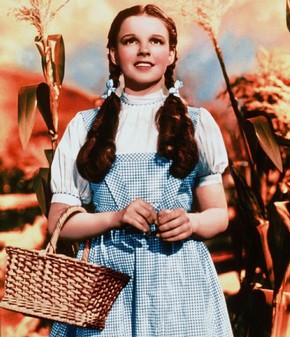Closed Exhibition – Hollywood Costume
Hollywood Costume: About the Exhibition
20 October - 27 January 2013
'Clothes are never a frivolity, they always mean something' James Laver (1899–1975), first Keeper of the V&A Theatre Collections
Costume designers are storytellers, historians, social commentators and anthropologists. Movies are about people, and costume design plays a pivotal role in bringing these people to life. Hollywood Costume illuminated the costume designer’s process in the creation of character from script to screen including the changing social and technological context in which they have worked over the last century.
This ground-breaking exhibition included over 100 of the most iconic and unforgettable film characters from a century of Hollywood filmmaking, 1912–2012. Hollywood Costume took us on a three-gallery journey from Charlie Chaplin through the Golden Age of Hollywood to the cutting-edge design for 'Avatar (2009, Costume Designer Mayes C Rubeo, Deborah L Scott) and 'John Carter of Mars' (2012, Costume Designer Mayes C Rubeo): Act 1, Deconstruction, put us in the shoes of the costume designer and illuminated the process of designing a character from script to screen; Act 2, Dialogue, examined the key collaborative role of the costume designer within the creative team; Act 3, Finale, celebrated the most beloved characters in the history of Hollywood and the ‘silver screen’.
These galleries were filled with cinema costumes that had never left the private and archival collections in California. Most of these clothes had never been publicly displayed and had never been seen beyond the secure walls of the studio archives.
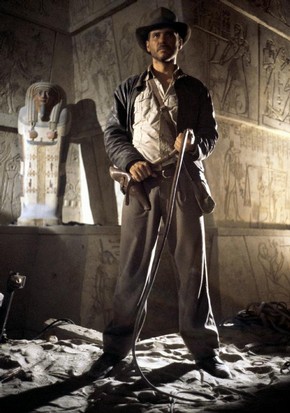
Harrison Ford as Indiana Jones in 'Raiders of the Lost Ark', 1981, costume designed by Deborah Nadoolman. Lucasfilm/Paramount/The Kobal Collection
Act 1: Deconstruction
'On every film, the clothes are half the battle in creating the character. I have a great deal of opinion about how my people are presented. We show a great deal by what we put on our bodies.' Meryl Streep
Movies are about people. It’s the people, the characters in the stories, who hold our attention and who are of endless fascination to the audience. The people are the emotional core of every movie and it’s their story that moves us. The costume designer must know 'who' a character is before they can design their costume. No matter the era that the story takes place, the audience is asked to believe that the people in the movie are real and that they had a life prior to the start of the movie. We join our cast of characters at one moment in their life. Everything about them must resonate true, including their clothes.
Whatever the genre, the designer’s creative process starts with research. This was explored in case studies including 'Fight Club' (Costume Designer Michael Kaplan, 1999) and 'Raiders of the Lost Ark' (Costume Designer Deborah Nadoolman, 1981) and concluded with a dissection of designer Alexandra Byrne’s 'Elizabeth: The Golden Age' (2007) accompanied by a royal court including Bette Davis as 'The Virgin Queen' (Charles LeMaire, Mary Wills, 1955), 'Marie Antoinette' (1938, Costume Designer Adrian), 'Marie Antoinette' (2006, Costume Designer Milena Canonero), 'Dangerous Liaisons' (1988, costume Designer James Acheson), 'Shakespeare in Love' (1998, Costume Designer Sandy Powell).
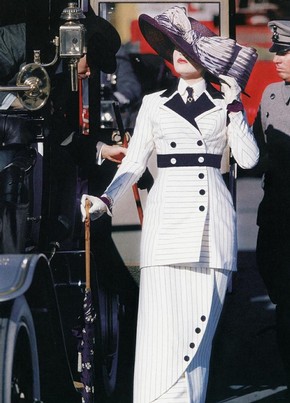
Kate Winslet as Rose DeWitt in 'Titanic', 1997, costume designed by Deborah L. Scott. 20th Century Fox/Paramount/The Kobal Collection
Act 2: Dialogue
'What’s great about costume is it’s the visual representation of the internal side of people. That’s what I love.' Tim Burton
Dialogue examined the intimate creative collaboration of great filmmakers and their costume designers with four pairs of especially commissioned on-camera interviews. Over the past century, costume designers work within a rapidly changing social and technological landscape: from silent to sound, black and white to Technicolor and from the Golden Age to 20th-century multi-national corporations and art house ‘indies’. Costume designers have embraced innovations such as Joanna Johnston’s slinky bombshell Jessica Rabbit in 'Who Framed Roger Rabbit' (1988) and 21st-century motion-capture, exemplified by Deborah L Scott, and Mayes C Rubeo who helped bring the magical characters of 'Avatar' (2009) to life.
The section concluded with the ‘Art of Becoming;’ two case studies with the participation on camera of the great American actors, Robert De Niro and Meryl Streep. Both actors, celebrated for their transformative skills, discussed their use of costume to channel their new ‘people.’ Five costumes chosen from their most memorable roles were on view.
Act 3: Finale
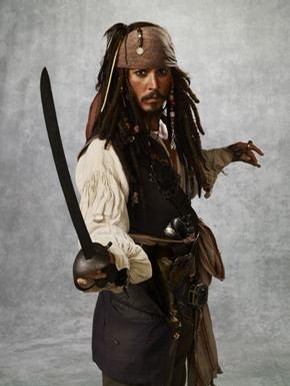
Johnny Depp as Jack Sparrow in 'Pirates of the Caribbean: At World's End', 2007, costume designed by Penny Rose. Walt Disney Pictures/The Kobal Collection
'If you (the costume designer) can make the audience feel the actress is the character, then it’s a good job of costuming.' Edith Head
Entering the last gallery, our visitors entered the most glamorous Hollywood nightclub in the world, filled with familiar famous faces who have taken their permanent place in international popular culture.
Finale was a celebration of Hollywood heroes, villains and femme fatales. Screen sirens including Mademoiselle Amy Jolly (Marlene Dietrich) in 'Morocco' (1930, Costume Designer Travis Banton), Sugar Kane Kowalczyk (Marilyn Monroe) in 'Some Like it Hot' (1959, Costume Designer Orry-Kelly), Holly Golightly (Audrey Hepburn) in 'Breakfast at Tiffany’s' (1961, Costume Designer Hubert de Givenchy), Fanny Brice (Barbra Streisand) in 'Funny Girl' (1968, Costume Designer Irene Sharaff), Roxie Hart (Renee Zellweger) in 'Chicago' (2002, Costume Designer Colleen Atwood), in Cecilia Tallis (Keira Knightly) 'Atonement' (2007, Costume Designer Jacqueline Durran) were seen alongside a dynamic grouping of action, fantasy, sci-fi and superhero characters including 'Matrix' (1999, Kym Barrett), 'Harry Potter' (2001, Judianna Makovsky), 'Twilight: New Moon' (2009, Tish Monaghan) and 'Spider-man' (2002, James Acheson)
Costumes are one channel by which a character is transformed from the written page to a multi-dimensional people. The costume designer gives the clothes to the actor, the actor gives the character to the director, and the director tells the story. When a character and a film capture the public’s imagination; the costumes can ignite worldwide fashion trends and influence global culture. Cinematic icons are born when the audience falls deeply in love with the people in the story. And that’s what movies, and costume design, is all about.
Deborah Nadoolman Landis
Senior Guest Curator, 'Hollywood Costume'
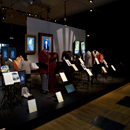
Inside the Exhibition
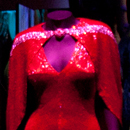
Inside the Exhibition

Inside the Exhibition
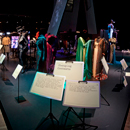
Inside the Exhibition
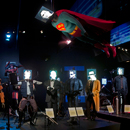
Inside the Exhibition

Inside the Exhibition
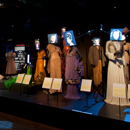
Inside the Exhibition
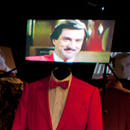
Inside the Exhibition
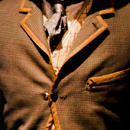
Inside the Exhibition
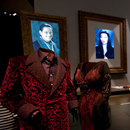
Inside the Exhibition

Inside the Exhibition

Inside the Exhibition
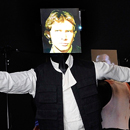
Inside the Exhibition
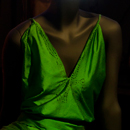
Inside the Exhibition
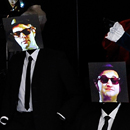
Inside the Exhibition
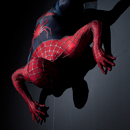
Inside the Exhibition
Video: Hollywood Costume
Video: The Western Costume Company
Hollywood Costume was kindly sponsored by Harry Winston.
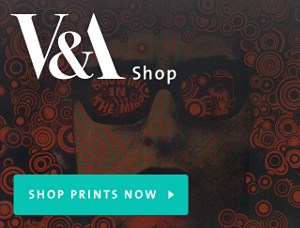
Contents
Beautiful gifts from the V&A shop

Browse the beautiful V&A Shop for exclusive gifts, jewellery, books, fashion, prints & posters, custom prints, fabrics and much more. All your purchases support the Victoria & Albert Museum.
Shop now